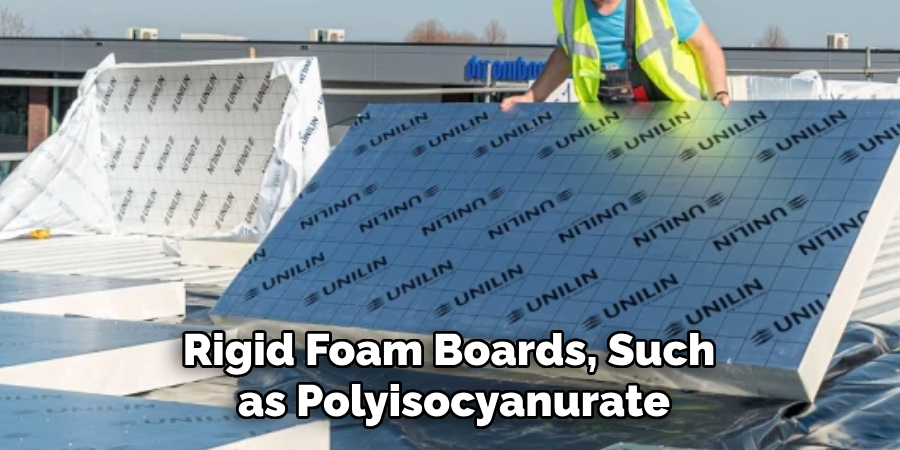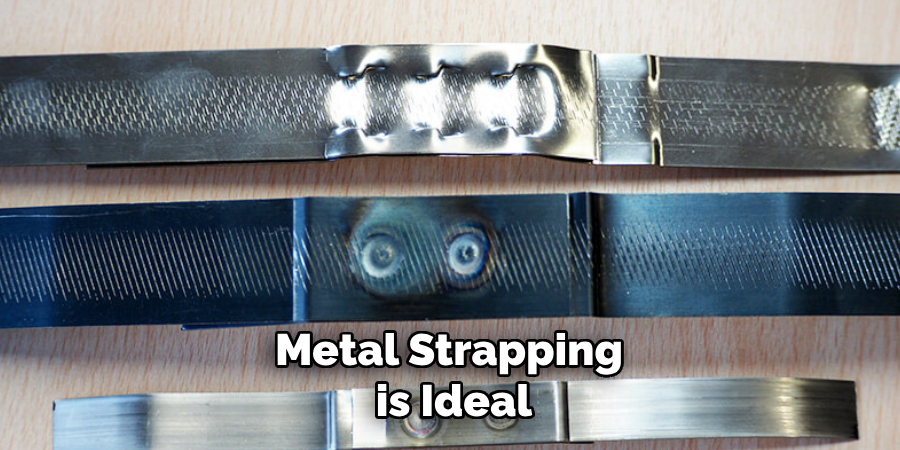Properly attaching insulation to metal surfaces is essential for improving energy efficiency, preventing condensation, and enhancing overall comfort in various structures. Whether you’re working on a metal building, HVAC ductwork, or other similar projects, understanding the correct methods and materials for insulation attachment is crucial. This guide will provide clear, step-by-step instructions on how to attach insulation to metal.

Benefits of Insulating Metal Surfaces
Insulating metal surfaces offers a myriad of advantages, making it a worthwhile investment for both residential and commercial projects. One of the primary benefits is improved energy efficiency, as insulation helps to regulate indoor temperatures by reducing heat transfer. This can significantly lower heating and cooling costs over time. Additionally, insulation minimizes condensation on metal surfaces, which prevents moisture-related issues such as corrosion, rust, and mold growth. Enhanced soundproofing is another benefit, as insulation helps to reduce noise levels by dampening vibrations. Lastly, insulating metal surfaces contributes to improved comfort by maintaining a more consistent indoor environment and protecting against extreme weather conditions.
Types of Insulation for Metal Surfaces
When choosing insulation for metal surfaces, it is important to select the right type based on the specific requirements of your project. Here are some common types of insulation used for metal surfaces:
- Fiberglass Insulation
Fiberglass insulation is a popular choice due to its affordability and effectiveness. Made from fine glass fibers, it provides excellent thermal resistance and is available in batts, rolls, or loose-fill forms. It is also resistant to mold and mildew, making it suitable for metal applications prone to moisture.
- Spray Foam Insulation
Spray foam insulation offers both thermal and air sealing properties. It is applied as a liquid that expands and hardens, filling gaps and adhering directly to metal surfaces. This makes it an ideal option for irregularly shaped areas or spaces requiring a tight seal.
- Rigid Foam Boards

Rigid foam boards, such as polyisocyanurate (polyiso), expanded polystyrene (EPS), or extruded polystyrene (XPS), provide excellent thermal insulation with a high R-value. These boards are lightweight, durable, and can be easily cut to fit specific dimensions.
- Reflective Insulation
Reflective insulation consists of a layer of reflective material, such as aluminum foil, combined with a backing material like polyethylene foam or bubble wrap. It works by reflecting radiant heat and is particularly effective in metal buildings exposed to sunlight.
- Mineral Wool Insulation
Mineral wool, also known as rock wool or slag wool, is made from natural or recycled minerals. It is highly fire-resistant, moisture-resistant, and provides excellent soundproofing properties, making it suitable for both thermal and acoustic insulation purposes.
Selecting the right insulation type depends on factors such as budget, environmental conditions, and the desired performance characteristics. Each type has its advantages, so consider your project’s specific needs before making a decision.
10 Methods How to Attach Insulation to Metal
1. Adhesive Bonding

Adhesive bonding is a versatile and effective method for attaching insulation to metal. Special adhesive compounds, such as high-temperature or spray adhesives, are applied directly to the metal surface and the insulation material. Before application, ensure the metal surface is clean and free of grease, oil, or rust to allow proper adhesion. Using a suitable adhesive ensures a strong and long-lasting bond, particularly for rigid insulation boards. For high-performance applications, opt for industrial-grade adhesives that are resistant to moisture and temperature fluctuations. This method works well for applications where mechanical fasteners are impractical or where aesthetics are a concern since it eliminates visible fixtures.
2. Mechanical Fasteners
Mechanical fasteners, such as screws, rivets, or bolts, offer a secure way to attach insulation to metal. This method is particularly effective for rigid insulation materials and is commonly used in construction and industrial settings. To implement, drill through the insulation and the metal substrate, then secure the insulation using washers or clamps to distribute the pressure evenly. For environments exposed to vibrations or thermal expansion, consider using self-tapping screws or fasteners with thermal breaks to prevent heat transfer. Always select fasteners compatible with both the insulation and the metal to avoid galvanic corrosion.
3. Metal Strapping
Metal strapping is ideal for securing insulation over cylindrical or curved metal surfaces, such as pipes or tanks. Wrap the insulation around the surface and use metal straps or bands to hold it in place. The straps should be tensioned evenly to prevent gaps or sagging. Stainless steel or aluminum straps are recommended for durability and resistance to corrosion. For added effectiveness, pair this method with an adhesive layer beneath the insulation to improve stability and minimize heat transfer.

4. Welding Pins and Washers
Welding pins and washers provide a permanent solution for attaching insulation to metal, especially in industrial applications. This method involves welding metal pins onto the metal surface, sliding the insulation over the pins, and securing it with washers. Welding pins are commonly made of stainless steel and are designed to withstand high temperatures and harsh conditions. This technique is suitable for thick insulation layers and ensures a reliable attachment that resists vibrations and mechanical stresses. However, proper safety precautions and skilled welding are essential.
5. Magnetic Fasteners
For temporary or non-permanent insulation applications, magnetic fasteners offer an innovative solution. These fasteners use strong magnets to attach insulation to metal surfaces without requiring drilling or adhesives. Magnetic fasteners are ideal for smooth, ferrous metal surfaces such as steel panels or ducts. This method is particularly useful in scenarios where the insulation may need to be removed or adjusted, such as in temporary construction setups or equipment maintenance. Pairing magnetic fasteners with flexible insulation materials ensures a snug fit.
6. Spray Foam Insulation
Spray foam insulation is both an insulating material and a method of attachment. It adheres directly to metal surfaces, expanding to fill gaps and contours. This method is highly effective for irregularly shaped surfaces or areas with complex geometries. To apply, clean the metal surface thoroughly and use a spray foam kit to distribute the foam evenly. Once cured, the foam forms a solid, lightweight, and durable insulating layer. However, proper ventilation and safety equipment are necessary during application due to the chemicals involved.
7. Insulation Clips and Rails
Insulation clips and rails provide a modular solution for attaching insulation to metal. Metal rails are fixed to the surface using screws or welding, and insulation panels are clipped into place. This method is often used in large-scale building projects or industrial facilities where insulation needs to be installed systematically and securely. Clips and rails allow for easy replacement or upgrading of insulation. Ensure the rail system is compatible with the thickness and type of insulation used to maximize thermal efficiency.
8. Fabric Netting or Mesh
Fabric netting or mesh is a practical option for securing insulation in areas where direct attachment to the metal is not possible. The netting is stretched over the insulation and fastened to the metal structure with staples, hooks, or ties. This method is particularly useful for loose-fill or batt insulation in walls, ceilings, or under floors. The netting holds the insulation in place, preventing sagging or settling over time. To ensure durability, use corrosion-resistant netting materials and fastening components.
9. Double-Sided Insulation Tapes
Double-sided insulation tapes provide a quick and easy method for attaching lightweight insulation to metal surfaces. These tapes feature adhesive on both sides and are designed to bond firmly to both the metal and the insulation. This method is suitable for small-scale projects or areas where speed is a priority. Before applying the tape, clean and dry the metal surface to ensure maximum adhesion. High-performance tapes that resist heat, moisture, and UV exposure are recommended for long-term effectiveness.

10. Velcro Strips
Velcro strips offer a versatile and removable solution for attaching insulation to metal. Attach one side of the Velcro to the metal and the other to the insulation, pressing firmly to secure. This method is particularly useful for lightweight insulation materials and temporary installations. It allows for easy removal and reattachment, making it ideal for maintenance applications. Use industrial-strength Velcro for better adhesion and durability in demanding environments. Ensure the metal surface is smooth and clean for optimal performance.
Maintenance and Upkeep
Proper maintenance and upkeep of insulation attached to metal surfaces are essential to ensure long-term efficiency and performance. Regularly inspect insulated areas for signs of wear, such as gaps, sagging, or damage caused by environmental factors. Replace or repair any compromised insulation promptly to maintain thermal efficiency and prevent energy loss. For methods involving adhesives, tapes, or foam, check for signs of weakening bonds over time, particularly in environments subject to moisture or extreme temperatures.
If magnetic fasteners or Velcro strips are used, ensure the fasteners remain aligned and securely in place. For permanent methods such as welding pins or rails, periodically examine connections for corrosion or structural changes that may impact the insulation’s stability.
Conclusion
Choosing the right method to attach insulation to metal surfaces is crucial for optimizing thermal performance, improving energy efficiency, and ensuring long-lasting results. Each method outlined in this guide offers distinct advantages and is suited for specific applications, whether temporary or permanent. Consider factors such as the type of insulation, the metal surface, environmental conditions, and the intended longevity of the installation when selecting the most appropriate approach. Thanks for reading our blog post on how to attach insulation to metal! We hope you found it helpful and informative.
Edmund Sumlin is a skilled author for Metal Fixes, bringing 6 years of expertise in crafting a wide range of metal fixtures. With a strong background in metalwork, Edmund’s knowledge spans various types of fixtures, from decorative pieces to functional hardware, blending precision with creativity. His passion for metalworking and design has made him a trusted resource in the industry.
Professional Focus:
- Expert in Metal Fixtures : Edmund aesthetic specializes in creating durable and innovative metal fixtures, offering both appeal and functionality. His work reflects a deep understanding of metalworking techniques and materials.
- Sustainability Advocate : He is dedicated to using sustainable practices, ensuring that every fixture is crafted with eco-friendly methods while maintaining high-quality standards.
In his writing for Metal Fixes, Edmund provides valuable insights into the latest trends, techniques, and practical advice for those passionate about metal fixtures, whether they are professionals or DIY enthusiasts. His focus on combining artistry with engineering helps others discover the true potential of metal in design.


